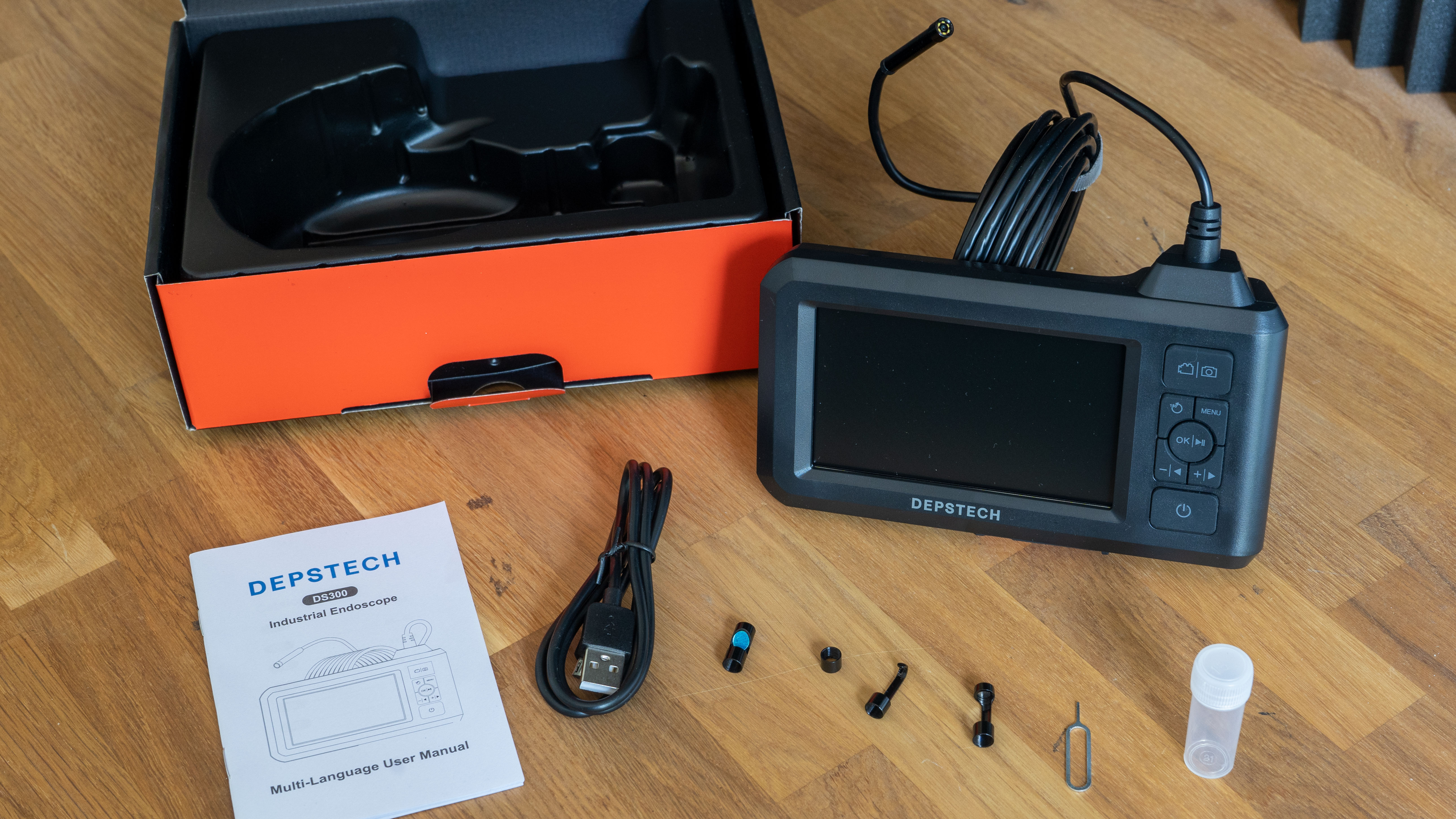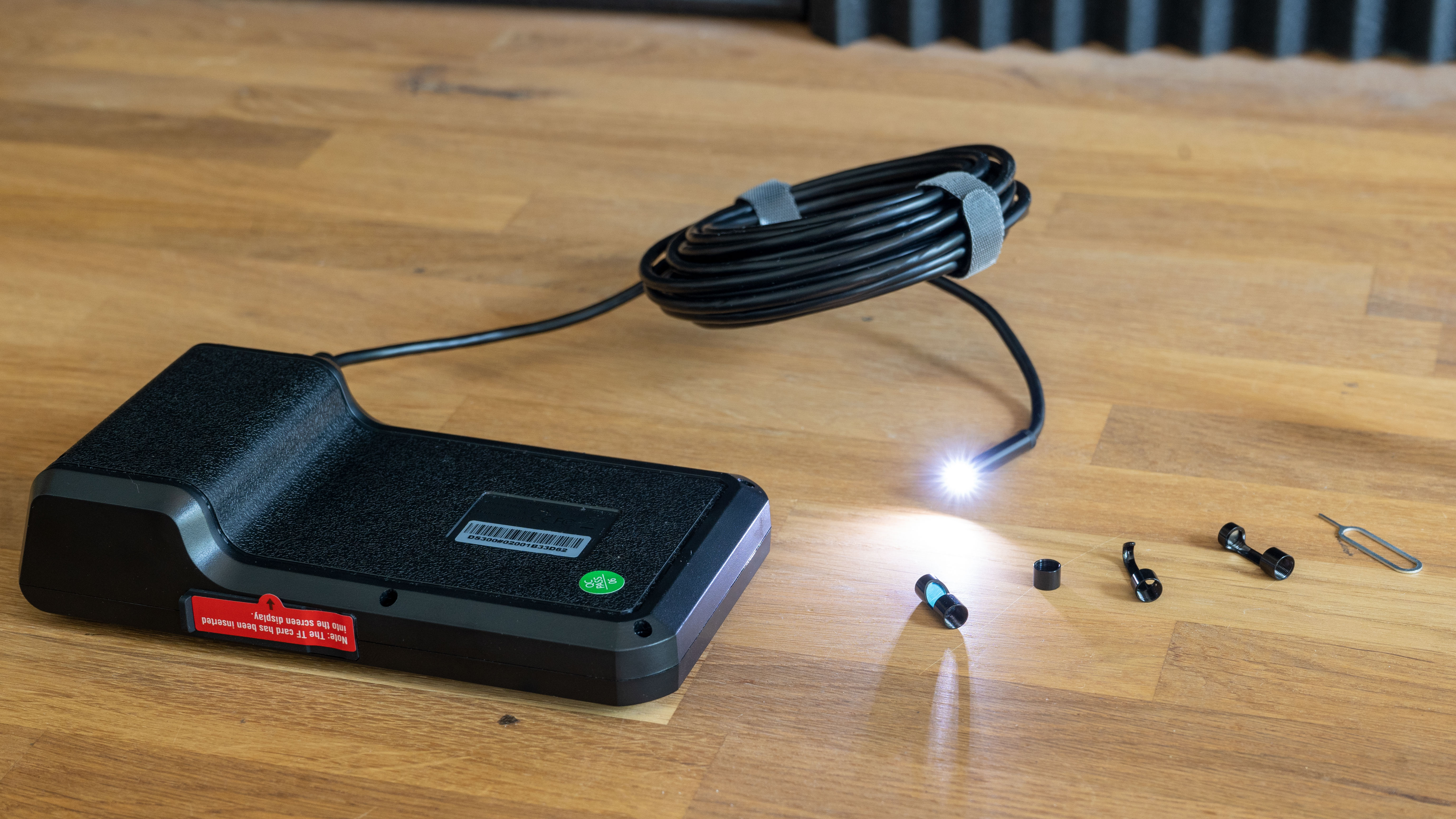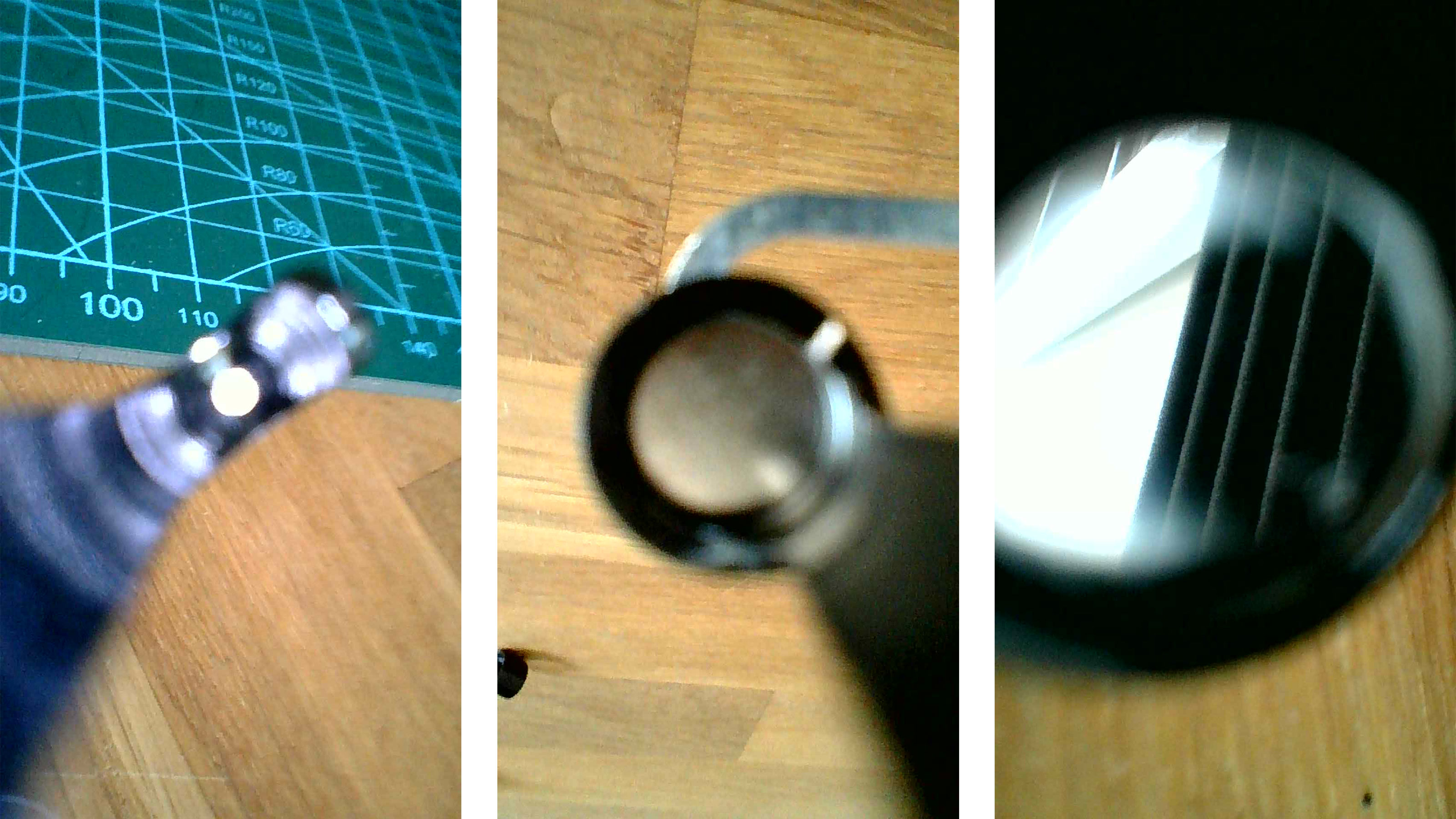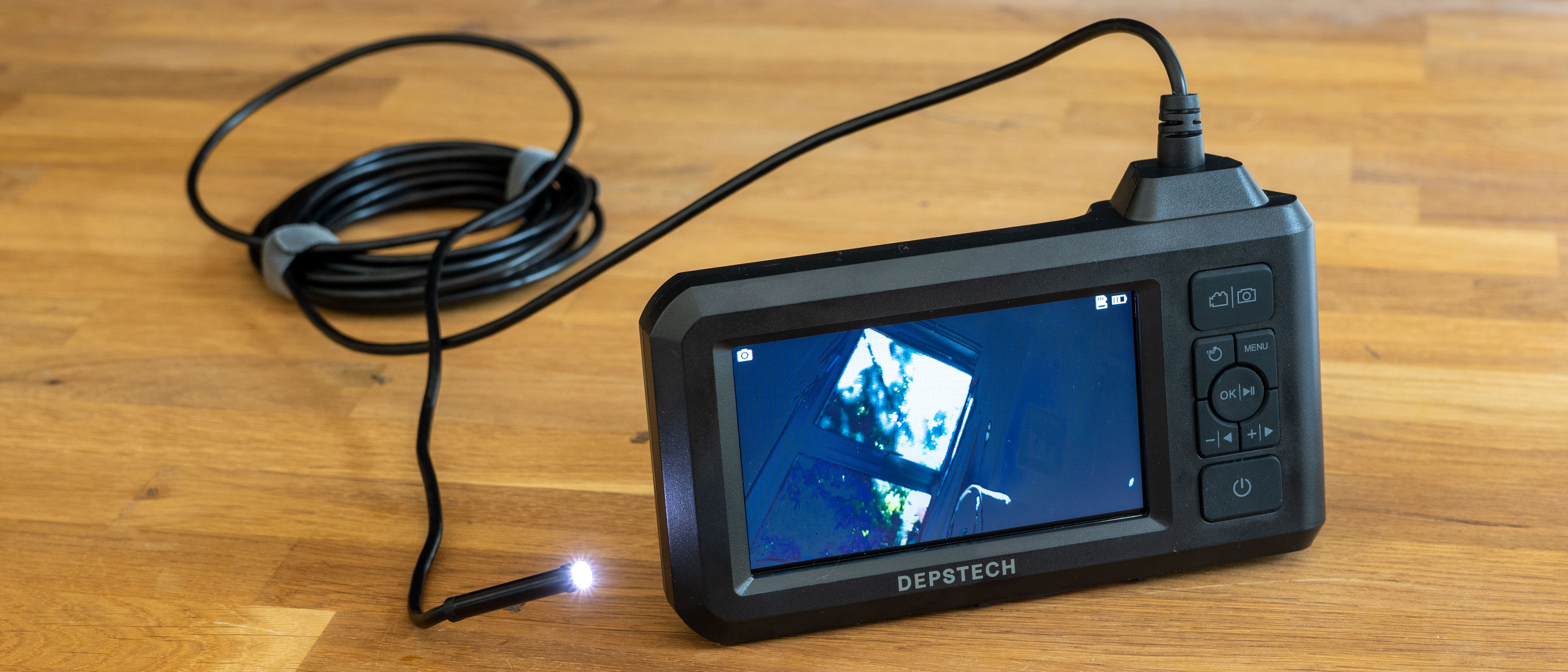Digital Camera World Verdict
The DS300 offers a lot of functionality, and easy portability, for a surprisingly low price. The recorded images and video quality, especially frame rate, could be better, but the live display is good quality and operates well whatever the light. The accessories are useful, and the handset easy to hold.
Pros
- +
Records stills or video to TF card
- +
4.3-inch screen is easy to view
- +
5 meter (16.5ft) semi-rigid cable
- +
Excellent picture, long range in focus
- +
Hook and magnet accessories
- +
Excellent picture and focus range
- +
Case and accessories included
Cons
- -
Body could be more rugged
- -
Recorded video quality well short of ‘live’ view
- -
Rear of probe can get caught when retracting
- -
Removing mirror’s protective coating very fiddly
Why you can trust Digital Camera World
An endoscope is a supremely useful tool in DIY and professional tasks which can save huge amounts of time – not to mention money – by making it possible to see below floorboards, or examine engine components in situ. There are solutions which allow USB, and even wireless, cameras which depend a phone for display, but the DS300 – for surprisingly little more money – connects directly with the camera so it can be used in the workshop without risk to your beloved communications device. (We have reviewed Depstech’s entries in these other categories too).
While there are more expensive, bigger and very rugged devices available (the DS500, for example), this handset and probe arrangement seems ideal for all but the most aggressively dirty environments.
Depstech DS300 specifications
Resolution: 1920 x 1080 pixels
Probe diameter: 5.5mm (0.22in)
Cable length: 5m (16.5ft)
Focus range: 41 – 5000mm (1.6-198in)
Ingress Protection: IP67 (camera and probe)
Field of view: 170˚
Charging port: Micro-USB
Accessories: Hook, Magnetic catch, Hard Case

Depstech DS300 features
The DS300 is a lightweight, portable inspection camera built around a 4.3-inch 16:9 screen. The camera probe is just 5.5mm diameter on the end of a 5 meter (16.5ft) semi-rigid cable, long enough for any task we can imagine.
There are three screw-on accessories for the probe – a hook, a magnet and an angled mirror for side viewing. The 6-LED lights around the lens can be remotely cycled through off and three brightness settings from the main unit.
This housing also features the ability to record stills and 1080P video of inspections onto the supplied 32GB TF card; these are .avi files which are readable on most computers. There is a clock which means, if set, the files will carry the correct metadata; the menu can also be used to change languages.

Depstech DS300 build and handling
As soon we lifted the DS300 from the box we found ourselves thinking “It can’t be this light.” The body is made of lightweight plastic, and the buttons rubber (with a distinct and pleasing click) but presumably the battery, which provides 4 hours between charges, isn’t overly taxed by the screen. Nonetheless, to our eye, picture quality is good. The back of the device has a bulge on the right, behind the buttons, which makes an ideal hand grip (though obviously favors right-handed use).
Also inside the box is a small tub containing the accessories. These screw onto the end of the probe, replacing a small collar which needs unscrewing first. There is also a spare collar. We did find removing the blue protective coating from the mirror without scratching it (there is no peel-up flap) surprisingly fiddly, but this is a one-time job.
The probe itself, is about 40mm long, connected to the flex with a 2mm hard rubber ring at the rear. This is very angular in design, meaning that it can catch when you’re retracting the probe. The flex needs to be bent and for longer runs you might find bending and re-inserting fiddly but a couple of Velcro holders mean you never need unfurl more flex than needed.

Depstech DS300 performance
There is only a short delay, and appearance of the ‘Depstech’ logo, before the device is ready to use. The camera captures detail from about 30mm away, and is clearly sharp at 40mm; anything beyond is visually clear too. It handles light (or the lack thereof well), so the screen looks sharp and is bright enough to use in daylight.
The recorded video is nominally 1080P at 30fps. While the quality is acceptable, it doesn’t hit the standard that implies – there is noise, but the real kick in the teeth is the frame-rate looks more like three frames a second, whether the videos are played back on the device or a computer. Switching to 720P seemed to improve this jerkiness slightly, suggesting the bitrate might be an issue (the camera is bound to wobble a bit in use, which is tough on digital compression).
We also found the image or video capture button a little odd in operation; press-and-hold to initiate, or stop, video recording. Single press to capture a still. Takes a little getting used to. Similarly the Play button needs a press-and-hold to have any effect; it isn’t obvious why a simple press shouldn’t be enough.
In the sample clip the camera is pushed through a small gap in the floor to inspect the debris left by a plumber. The brightness is cycled (hence occasional blackness).
Depstech DS300 verdict
The DS300 is a very useful tool, and we especially liked the hook and magnet – though the latter had a clear impact on the proportion of forward view remaining. In use the screen is clear and sharp and details are easy to make out. Having a 180˚ flip feature at the touch of a single button very much appreciated, though other buttons are a bit quirky in behavior.
Recording wasn’t of the standard you’d expect having viewed the screen in live use – we’re not sure why. Certainly the files have very low sizes, so very aggressive compression, but the shuddering frames was the weirdest aspect. Nonetheless it is useful to be able to review your inspection and at least the 32GB card will probably be all you need.
Ultimately the deciding factor here should probably be the price, and that is very much in the DS300’s favor, though it’s also worth noting the camera and lights together handle low light well.
Read more
Best borescopes
Best thermal-imaging cameras
Best laser levels

With over 20 years of expertise as a tech journalist, Adam brings a wealth of knowledge across a vast number of product categories, including timelapse cameras, home security cameras, NVR cameras, photography books, webcams, 3D printers and 3D scanners, borescopes, radar detectors… and, above all, drones.
Adam is our resident expert on all aspects of camera drones and drone photography, from buying guides on the best choices for aerial photographers of all ability levels to the latest rules and regulations on piloting drones.
He is the author of a number of books including The Complete Guide to Drones, The Smart Smart Home Handbook, 101 Tips for DSLR Video and The Drone Pilot's Handbook.

